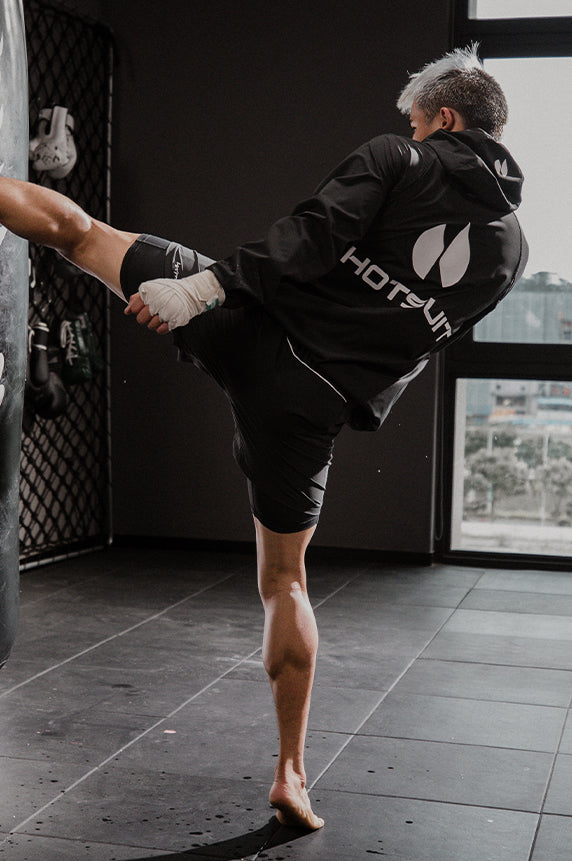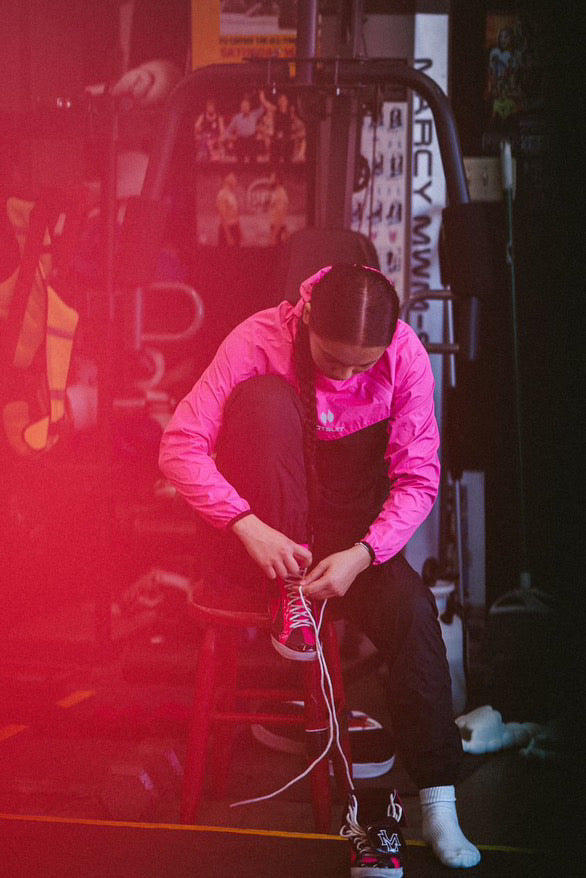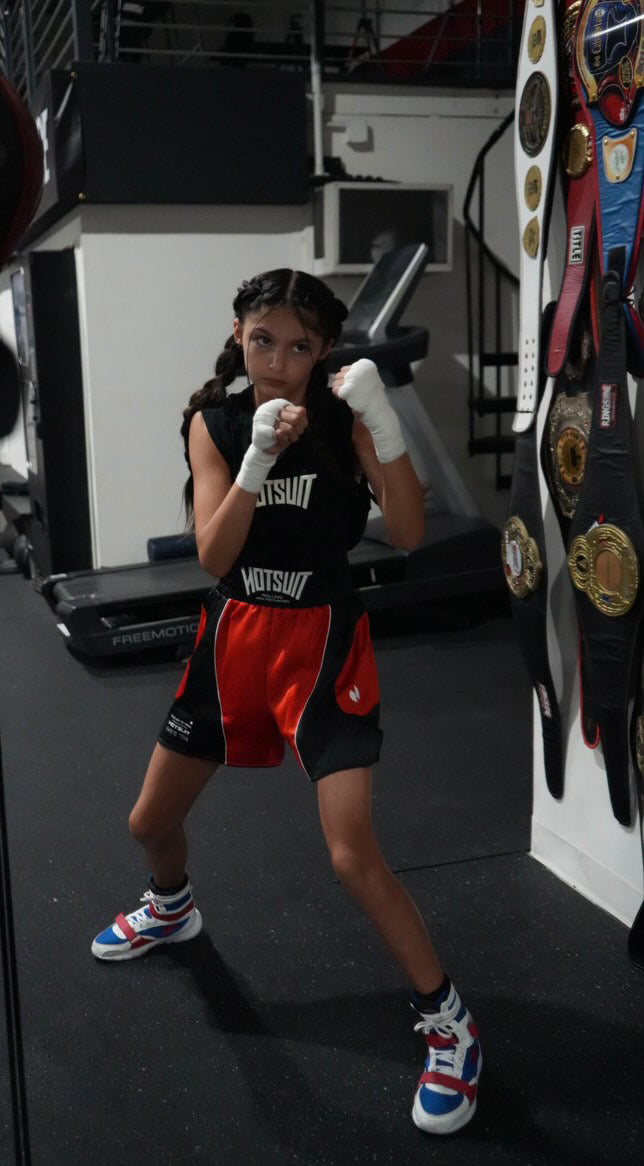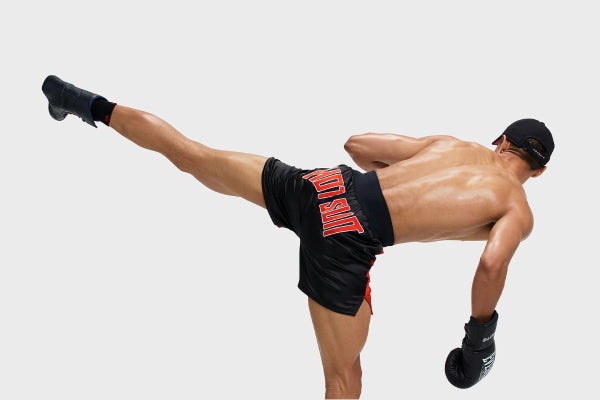For any competitive fighter, boxing weight cutting is a critical part of the game. Done correctly, it provides a significant advantage. Done incorrectly, it can ruin your performance before you even step into the ring.
This pro guide is designed to teach you how to cut weight for boxing without sacrificing your strength and stamina. We'll cover a safe strategy, the role of a modern sauna suit, and the importance of critical hydration.

The Cardinal Rule: Safety First, Always
Before we discuss any techniques, the number one rule is safety. An unsafe weight cut is a losing strategy. How do boxers cut weight safely? It begins with understanding the risks.
Understanding the Risks of Improper Weight Cutting
Improper boxing weight cutting, especially rapid dehydration, can lead to decreased strength, reduced endurance, muscle cramps, and poor cognitive function. In severe cases, it can be dangerous. Your health is your most valuable asset as a fighter.
The Goal: Maximum Water Loss, Minimum Performance Drop
The goal of a smart weight cut is to temporarily reduce your body mass, primarily through water weight loss, while minimizing any negative impact on your athletic performance. It's a precise balancing act.
The Strategy: A Phased Approach to Weight Cutting
A professional weight cut doesn't happen overnight. It's a phased approach that begins weeks before your weigh-in.

Weeks Out: The Body Fat Reduction Phase
The foundation of an easy weight cut is having a low body fat percentage. This process of fat loss should be done gradually over your training camp through a disciplined diet and consistent training. The leaner you are, the less you'll need to rely on acute water cutting.
Fight Week: The Water and Sodium Manipulation Phase
In the final week, the focus shifts to manipulating your body's water levels. This involves a scientific strategy of first increasing, then systematically decreasing your water and sodium intake to encourage your body to flush out excess fluid.
The Tool: Using a Sauna Suit for the Final Cut
In the final 24-48 hours, a high-quality sauna suit becomes an indispensable tool for shedding the last few pounds of water weight.
When and How to Use Your Sauna Suit
A sauna suit should be used for short, low-intensity sessions. This could be a light jog, some shadowboxing, or riding a stationary bike.
The goal is to elevate your body temperature and stimulate sweating, not to have a grueling workout. High-intensity training during this phase is counterproductive.
The Hotsuit Advantage: Efficiency and Modern Safety Features
Modern sauna suits made with advanced tech fabrics are the professional's choice. Unlike old plastic suits, Hotsuit's technology provides highly efficient heat retention in a lightweight, durable package.
This efficiency means you can achieve your goal faster, spending less time in a dehydrated state.
Sauna Suit Safety: A Boxer's Checklist
When using a sauna suit for weight cutting, follow this checklist:
-
Never train alone. Always have a coach or partner present.
-
Keep sessions short. Aim for 15-20 minute intervals.
-
Listen to your body. If you feel dizzy or unwell, stop immediately.
-
Prioritize modern materials. Avoid non-breathable plastics.
For a tool engineered for this exact purpose, .
The Recovery: Winning the Battle After the Weigh-In
Making weight is only half the battle. The recovery and rehydration process is where you win back your strength and prepare for the fight.

Your Critical Rehydration Plan
Immediately after stepping off the scale, begin your rehydration strategy. Start by sipping an electrolyte drink. Your goal is to systematically replenish the fluids you've lost over the next 12-24 hours.
The Right Foods to Refuel Your Body
Focus on easily digestible carbohydrates to restore your glycogen stores and lean proteins to support your muscles. Avoid heavy, fatty foods that can slow down digestion.
Step on the Scale with Confidence
By following a smart, scientific, and safe approach to boxing weight cutting, you can step on the scale with confidence, knowing you've given yourself the best possible chance for victory.
What is your biggest challenge when it comes to cutting weight? Share your experience in the comments.
Common Questions About Boxing Weight Cutting
How much weight is too much to cut? Most coaches and nutritionists advise against cutting more than 5-8% of your body weight through acute dehydration. Exceeding this can severely impact your health and performance.
Will cutting weight affect my punching power? If you rehydrate and refuel properly, the impact on your power should be minimal. A poorly managed recovery is what truly kills your power on fight night.
Should I train hard while cutting water weight? No. The final water-cutting phase should only involve very light activity. Hard training in a dehydrated state is dangerous and will deplete your energy stores needed for the fight.
What are the best drinks for rehydration after a weigh-in? Start with a drink containing a balanced mix of electrolytes (sodium, potassium). Coconut water is a good natural option. Following that, continue with water and carbohydrate-containing drinks. Don't leave your performance to chance.







Leave a comment
All comments are moderated before being published.
This site is protected by hCaptcha and the hCaptcha Privacy Policy and Terms of Service apply.